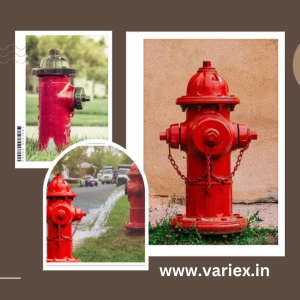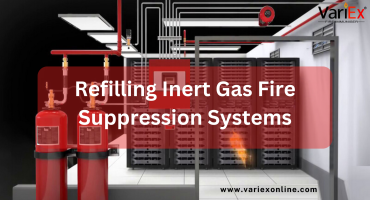![]()
Fire Immuniser
+91-7829629111
Email: info@variex.in
Varistor Technologies Pvt. Ltd.
Block-1, First Floor, Ardente Office One, Hoodi Circle, ITPL Main Road, Bengaluru, Karnataka 560048, IN
How To Install Fire Hydrant System
Installing a fire hydrant system is a critical aspect of fire safety infrastructure in urban and suburban areas. Proper installation ensures firefighters have quick access to water during emergencies, potentially saving lives and minimizing property damage. Below is a comprehensive guide on how to install a fire hydrant system:
1. Conduct Site Assessment
Before installation, conduct a thorough assessment of the area to determine the optimal locations for hydrants. Consider factors such as proximity to buildings, accessibility for firefighting vehicles, and coverage of high-risk areas.
2. Obtain Permits and Approvals
Obtain necessary permits and approvals from local authorities, including fire departments and municipal agencies. Ensure compliance with building codes, zoning regulations, and any other relevant regulations governing fire hydrant installations.
3. Design the System
Work with engineers or fire safety professionals to design the fire hydrant system layout. Consider factors such as water pressure, flow rate, pipe sizing, and hydrant spacing to ensure adequate coverage and performance during firefighting operations.
4. Select Hydrant Types
Choose appropriate fire hydrant types based on the specific requirements of the area and local regulations. Options include pillar hydrants, post hydrants, and flush hydrants, each suitable for different applications and environments.
5. Install Underground Pipes
Excavate trenches along the planned route of the underground water mains according to the approved design. Install durable pipes, typically made of ductile iron or PVC, and connect them to the municipal water supply or other water sources.
6. Position Hydrants
Place hydrants at predetermined locations along the underground pipes, ensuring they are easily accessible to firefighters and strategically positioned to provide adequate coverage. Use concrete encasements or anchor bolts to secure the hydrants in place.
7. Connect Valves and Controls
Install valves, gate valves, and other control devices at key points along the water mains to regulate water flow and isolate sections for maintenance or repair. Ensure all connections are secure and properly sealed to prevent leaks.
8. Test the System
Conduct thorough testing and flushing of the fire hydrant system to verify its functionality and performance. Test water pressure, flow rate, and valve operation to ensure compliance with design specifications and regulatory requirements.
9. Obtain Certification
Once the installation is complete and the system has passed testing, obtain certification from relevant authorities or third-party inspectors. Documentation of compliance with regulatory standards may be required for approval and ongoing maintenance.
10. Conduct Training and Maintenance
Provide training for local fire department personnel on the operation and maintenance of the fire hydrant system. Establish a regular maintenance schedule for inspections, testing, and repairs to ensure the system remains in optimal condition.
By following these steps and working closely with regulatory authorities and fire safety professionals, installing a fire hydrant system can significantly enhance fire protection capabilities and contribute to safer communities. Proper installation and maintenance are essential for ensuring the system's effectiveness during emergencies.
Frequently Asked Questions
There are various types of fire hydrants, including pillar hydrants, post hydrants, and flush hydrants. Each type has specific applications and installation requirements, depending on factors such as soil conditions and climate.
Fire hydrant pipes are typically buried underground at depths ranging from 3 to 4 feet, depending on local regulations and soil conditions. Proper burial depth is essential to protect pipes from damage and freezing.
Fire hydrant systems should be inspected and tested regularly, usually annually, to ensure they are in working condition. Visual inspections may also be conducted more frequently to check for damage or obstructions.
While fire hydrants are essential for fire protection, there may be limitations on their installation in certain areas due to factors such as space constraints, underground utilities, or environmental considerations.
If you notice a damaged or leaking fire hydrant, report it to the local fire department or municipal authorities immediately. Prompt repairs are necessary to maintain the effectiveness of the fire hydrant system.
Final Say
We at VariEx.in or Variexonline.com have mastered the art of designing, installing, inspecting, and fixing automatic sprinkler systems with the help of our in-house team, which is capable of delivering the fire sprinkler services you need, whether large or small and at affordable cost.
To schedule a fire sprinkler installation, or you think our services could benefit your commercial property, contact us online or give us a call at, 7829629111










